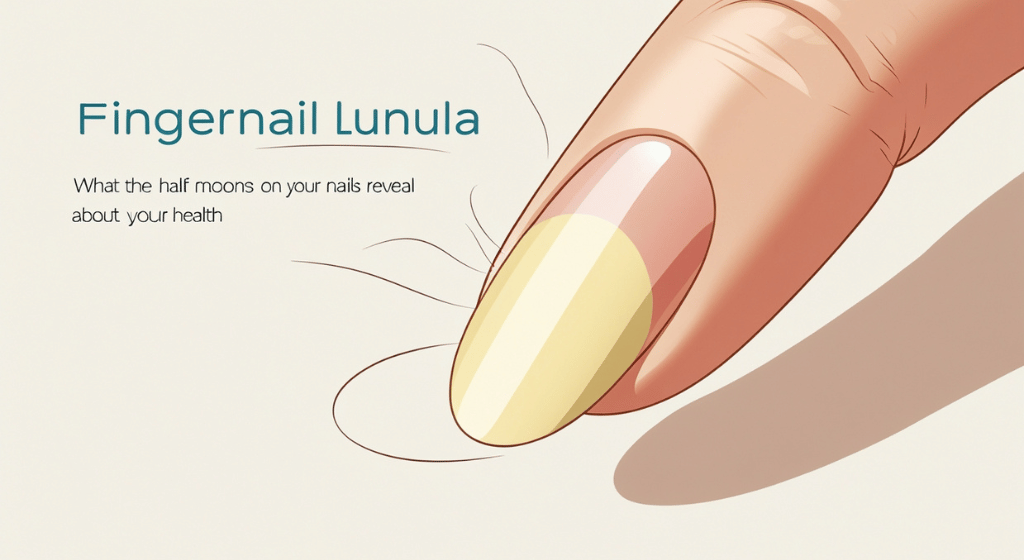Fingernail Lunula: What the Half Moons on Your Nails Reveal About Your Health
Have you ever noticed the small, white half-moons near the base of your nails? These are called fingernail lunulae, and they can provide valuable insights into your overall health.
Understanding Fingernail Lunulae
The term “lunula” comes from the Latin word for “little moon.” This crescent-shaped area is part of the nail matrix, where new nail cells are produced. The lancet plays a key role in nail growth and structure.
Changes in the appearance of lunulae—such as absence, discoloration, or abnormal size—may indicate underlying health conditions. If you notice significant changes along with symptoms like fatigue, dizziness, or unexplained weight changes, it may be advisable to consult a healthcare professional.
What Your Lunulae May Indicate About Your Health
According to traditional health philosophies, the lunulae can offer insights into various aspects of well-being. Here are some common observations and their potential meanings:
1. Absent Lunulae
If lunulae are not visible on your nails, it does not necessarily indicate a health problem. However, if they are missing from all fingers, including the thumbs, it may be linked to conditions such as anemia, malnutrition, or thyroid dysfunction. Some studies suggest a connection to vitamin B-12 deficiency. Children typically have smaller or absent lunulae, which may become more visible with age.
2. Lunula on the Little Finger
Normally, the lunula on the little finger is either very small or absent. The little finger is associated with the heart, kidneys, and small intestine. If a lunula is present and prominent, it may be linked to high blood pressure.
3. Large Lunulae on All Fingers
If lunulae occupy more than half of the nail surface, it may indicate cardiovascular concerns, low blood pressure, or an overstimulated nervous system. Those who experience chronic stress or thyroid imbalances may have enlarged lunulae.
4. Lunula Color Changes
The color of lunulae can sometimes shift, which may suggest various health issues:
- Gray Lunulae: This may be associated with chronic fatigue, digestive problems, or poor nutrient absorption.
- Purple Lunulae: Could indicate circulation problems or lack of oxygen in the blood, often accompanied by dizziness or headaches.
- Pink or red lunulae: may be a sign of cardiovascular disease or immune system disorders.
- Blue Lunulae: Sometimes linked to medication use, diabetes, or metabolic conditions.
- Black Lunulae: Rare but may indicate severe heavy metal poisoning.
5. Lunulae on Individual Fingers
Each nail is believed to be connected to different organs and body systems. If a lunula changes on a specific finger, it may suggest issues in the corresponding area:
- Little Finger: Associated with the heart, liver, and small intestine. An unusually large lunula may indicate high blood pressure.
- Ring Finger: Related to the lymphatic and reproductive systems. A barely visible lunula could indicate sluggish lymphatic circulation.
- Middle Finger: Linked to the nervous system and brain function. A missing lunula may suggest neurological or vascular concerns.
- Index Finger: connected to the intestines and pancreas.
- Thumb: Typically the most prominent lunula. If absent or very small, it may be linked to lung function or spleen health, often observed in smokers or individuals with hypertension.
6. Lunula Shape Abnormalities
A healthy lunula is typically smooth and semicircular. If it appears square, triangular, or irregular, it could be due to excessive nail trauma, over-manicuring, or genetic conditions. Some chromosomal disorders, such as Down syndrome, may also be associated with misshapen lunulae.
When to Seek Medical Advice
If you notice drastic changes in your lunulae and symptoms like extreme fatigue, dizziness, or other health concerns, it may be best to consult a doctor. While changes in lunulae alone are not necessarily a cause for alarm, they may serve as additional indicators of underlying health conditions.
By paying attention to these small but significant details, you can gain insight into your overall well-being and take proactive steps toward maintaining good health.


